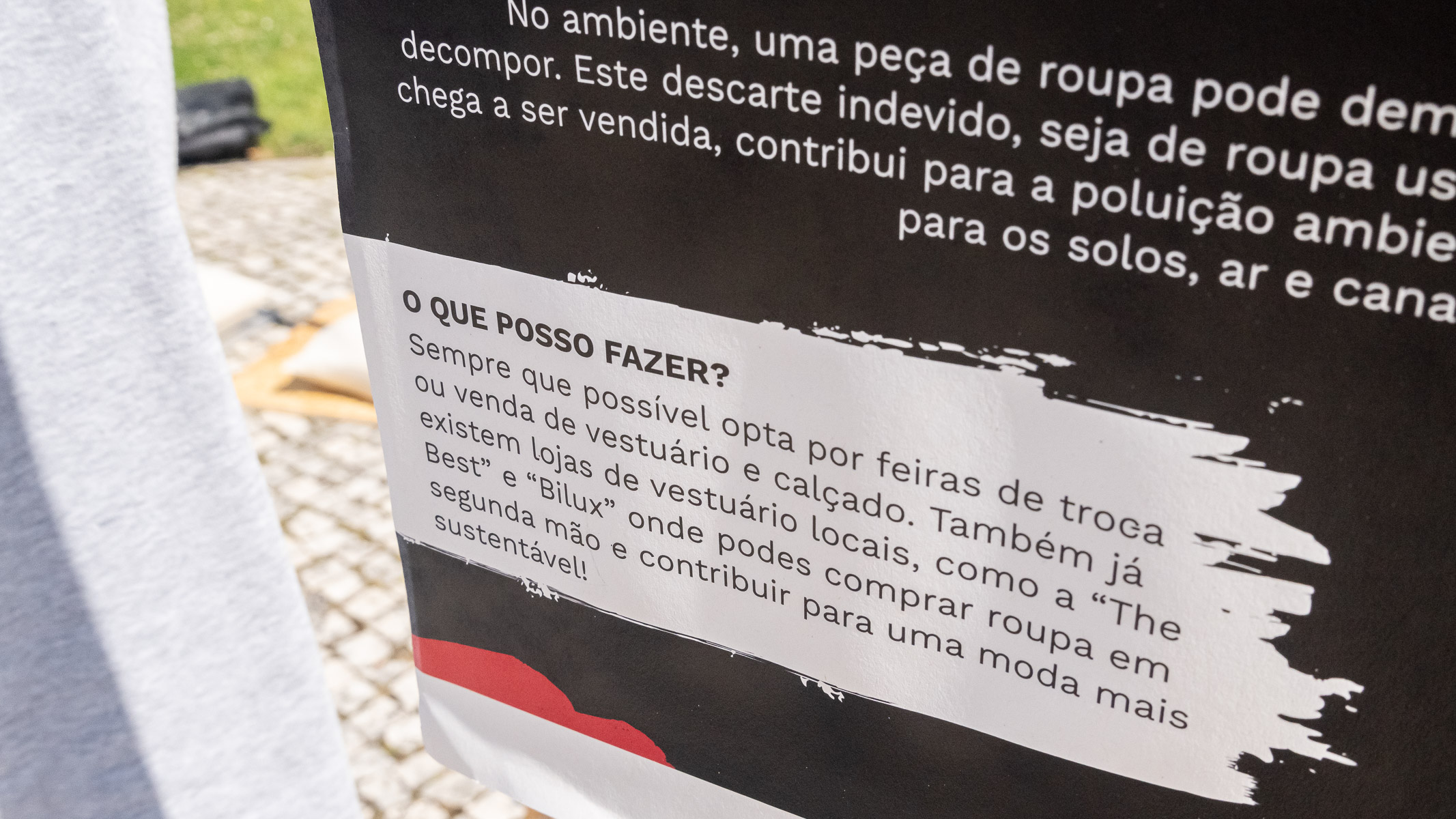“How much does a sweater cost?”
The Manuel Firmino Market square hosted an unusual fashion show, where the clothes were accompanied by tags that showed not the price, but the cost!
Estimated reading time: 3 minutes
© Helder Berenguer
2700 litres of water. This is the average amount of water that a person can drink fortwo and a half years. This was one of the starting points for Agora Aveiro’s most recent initiative, “Deixa-te de Modas!” (“Let Fashion Aside”). Through a “guerrilla” style intervention, our volunteers brought to the street, on May 7, an exhibition with mannequins, clothes and some shocking values.
The fashion industry is increasingly influencing people's perceptions of the necessity to constantly reinvent our style, follow the latest trends, or purchase eye-catching items. This increased need for consumption coupled with the cheap prices many companies charge, results in rampant production and manufacturing of garments. But what really is at the bottom of this “fashion industry” pyramid? And what are the implications of all our excessive consumption? Agora Aveiro brought some responses.
Every year, on a global scale, the fashion industry is one of those that has a greater negative impact on the environment. The water used in the stages of raw materials production, dyeing, drying and consumer use, is enough to satiate the thirst of 110 million people. Alongside the exorbitant expenditure of water in manufacturing, there is the problem of contamination caused by chemicals or microfibres. These figures derive mainly from the production of some raw materials, such as cotton, which consumes over 8 million tons of fertilizers, and the manufacture of synthetic fibers, which uses approximately 70 million barrels of oil. Around 500,000 tons of these microfibres wind up in the oceans, where they gradually become part of the food chain. The fashion industry, in addition to contributing to water pollution, has an impact on air quality, accounting for 10% of all carbon dioxide emissions, which is equivalent to all international flights and sea travel combined. To the enormity of problems associated with garment manufacturing, one can also highlight the increase in garments that are discarded. Around 80% of the total produced ends up in landfill, such as the Atacama Desert in Chile, where they are incinerated or left to decompose, taking up to 200 years.
It's impossible to discuss the environmental impact without discussing the harsh working conditions that many workers face. Many garment companies choose countries with cheap labour like India, China, Bangladesh, Vietnam or Cambodia, where they demand 14 to 16 hours of forced labour each day, seven days a week. These people are also in daily contact with toxic substances, inhale fibre-derived dusts in inadequately ventilated spaces, and operate in environments with low fire safety and with building structural instabilities.
One after another, this information, duly substantiated and presented in the form of posters and labels, accompanied the most curious passers-by who were passing by. But “stitching” negative things into clothing without providing more conscious alternatives doesn’t even seem like something that our volunteers would do. “Think before you buy, look for transparency, accountability in brands, and know where your clothes come from, avoid synthetic fibres, take care of your clothes, rethink before throwing away and buy second-hand”. These were some of the more optimistic ideas that hope to create a sense of responsibility in consumers, allowing them to make more sustainable and humanitarian clothing purchases.
Now we return to the original question: “How much does a jumper cost?”
2700 litres of water.
“Deixa-te de Modas” is part of the “Underground Division” project. It was made in association with The Best and Bilux. It also had the the support of Aveiro’s City Hall and Instituto Português do Desporto e Juventude I.P..

Nuno Afonso












